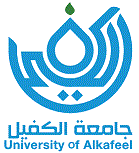Abstract
The motivation of the present study is to study and address the limitations imposed on hydrological models and the spatial and temporal distribution of streamflow in the Watershed Diyala River (WDR) from January 1996 to April 2023, which has an area of 25652 km2, which is considered an important source of water for central and southern Iraq, to enable decision-makers to make a future management plan for streamflow. To achieve this motivation, the SWAT model was used and fed by input data such as a Digital elevation model with a 30 m resolution, a soil map, the land use and land cover map with a spatial resolution of 30 m, weather data, and the daily streamflow data. Using the SUFI-2 algorithm and SWAT-CUP, the model was calibrated automatically. Statistically, using the R2, NSE, and Pbs the performance of the model was evaluated. The statistical analysis displays a perfect match between simulated and observed values when calibrating and verifying the model for streamflow. The results indicate that the monthly evapotranspiration rate and streamflow constitute 65% and 37% of the rainfall in WDR, respectively, and that the annual average surface runoff ranged from 320.358 to 8.325m3/s. Therefore, it is possible to rely on the calibrated model, successfully verified with high reliability, to simulate the hydrological model in WDR.
Recommended Citation
Khudier, Ahmed Sagban and Hamdan, Ahmed Naseh Ahmed
(2024)
"Hydrological Model of the Diyala River Watershed in Iraq Using Soil Water Assessment Tool,"
Al-Bahir: Vol. 4:
Iss.
2, Article 6.
Available at: https://doi.org/10.55810/2313-0083.1061
References
[1] Da Silva VD, Silva MT, Souza EP. Influence of land use change on sediment yield: a case study of the sub-middle of the Sao Francisco river basin. Eng Agrícola 2016 Nov; 36:1005-15. https://doi.org/10.1590/1809-4430-Eng.Agric. v36n6p1005-1015/2016.
[2] Khayyun TS, Alwan IA, Hayder AM. Hydrological model for Hemren dam reservoir catchment area at the middle River Diyala reach in Iraq using ArcSWAT model. Appl Water Sci 2019 Jul;9:1-5. https://link.springer.com/article/10.1007/ s13201-019-1010-0.
[3] Nyatuame M, Amekudzi LK, Agodzo SK. Assessing the land use/land cover and climate change impact on water balance on Tordzie watershed. Rem Sens Appl: Soc Environ 2020 Nov 1;20:100381. https://doi.org/10.1016/j.rsase.2020. 100381.
[4] Leta MK, Demissie TA, Tranckner J. Hydrological responses of watershed to historical and future land use land cover change dynamics of Nashe watershed, Ethiopia. Water 2021 Aug 29;13(17):2372. https://doi.org/10.3390/w13172372.
[5] Samal DR, Gedam S. assessing the impacts of land use and land cover change on water resources in the Upper Bhima river basin, India. Environ Chall 2021 Dec 1;5:100251. https:// doi.org/10.1016/j.envc.2021.100251.
[6] Juma LA, Nkongolo NV, Raude JM, Kiai C. Assessment of hydrological water balance in Lower Nzoia Sub-catchment using SWAT-model: towards improved water governace in Kenya. Heliyon. 2022 Jul 1;8(7):e09799. https://doi.org/ 10.1016/j.heliyon.2022.e09799.
[7] Erraioui L, Taia S, Taj-Eddine K, Chao J, El Mansouri B. Hydrological Modelling in the Ouergha Watershed by Soil and Water Analysis Tool. J Ecol Eng 2023 Apr 1;24(4). https:// doi.org/10.12911/22998993/161043.
[8] Larbi I, Obuobie E, Verhoef A, Julich S, Feger KH, Bossa AY, Macdonald D. Water balance components estimation under scenarios of land cover change in the Vea catchment, West Africa. Hydrol Sci J 2020 Oct 2;65(13):2196-209. https:// doi.org/10.1080/02626667.2020.1802467.
[9] Khudier AS, Hamdan AN. Assessment of the impacts of land use/land cover change on water resources in the Diyala River, Iraq. Open Eng 2023 Oct 10;13(1):20220456. https:// doi.org/10.1515/eng-2022-0456.
[10] Manhi HK, Al-Kubaisi QY. Estimation Annual Runoff of Galal Badra Transboundary Watershed Using Arc Swat Model, Wasit, East of Iraq. Iraqi Geol J 2021 Apr 27:69-81. https://10.46717/igj.54.1D.6Ms-2021-04-26.
[11] Alrammahi FS, Ahmed Hamdan AN. Hydraulic model for flood inundation in Diyala River Basin using HEC-RAS, PMP, and neural network. Open Eng 2024 Feb 9;14(1): 20220530. https://doi.org/10.1515/eng-2022-0530.
[12] Khayyun TS, Abdulkareem I, Hayder AM. Hydrological Model for Derbendi-Khan Dam Reservoir Watershed Using SWAT Model. Eng Technol J 2020 Jun 25;38(6):896-909. https://10.30684/etj.v38i6A.890.
[13] Mhaina AS. Modeling suspended sediment load using SWAT model in data scarce area-Iraq (Al-Adhaim Watershed as a Case Study). University of Technology; 2017. https://10.13140/RG.2.2.19048.78081.
[14] Gyamfi C, Ndambuki JM, Salim RW. Hydrological responses to land use/cover changes in the Olifants Basin, South Africa. Water. 2016 Dec 9;8(12):588. https://doi.org/10.3390/w8120588.
[15] Chemura A, Rwasoka D, Mutanga O, Dube T, Mushore T. The impact of land-use/land cover changes on water balance of the heterogeneous Buzi sub-catchment, Zimbabwe. Rem Sens Appl: Soc Environ 2020 Apr 1;18:100292. https://doi.org/ 10.1016/j.rsase.2020.100292.
[16] Saputra AW, Zakaria NA, Weng CN. Changes in land use in the Lombok River Basin and their impacts on river basin management sustainability. IOP Conf Ser: Earth Environ Sci 2020 Feb 1;437(1):012036. IOP Publishing, https://10.1088/ 1755-1315/437/1/012036.
[17] Hamdan AN, Almuktar S, Scholz M. Rainfall-runoff modeling using the HEC-HMS model for the Al-Adhaim River catchment, northern Iraq. Hydrology 2021 Mar 26;8(2): 58. https://doi.org/10.3390/hydrology8020058.
[18] Al-Khafaji MS, Al-Chalabi RD. Assessment and mitigation of streamflow and sediment yield under climate change conditions in Diyala River Basin, Iraq. Hydrology 2019 Jul 23; 6(3):63. https://10.3390/hydrology6030063.
[19] Leta MK, Demissie TA, Tranckner J. Modeling and prediction of land use land cover change dynamics based on land change modeler (Lcm) in nashe watershed, upper blue nile basin, Ethiopia. Sustainability 2021 Mar 27;13(7):3740. https:// doi.org/10.3390/su13073740.
[20] Arnold JG, Moriasi DN, Gassman PW, Abbaspour KC, White MJ, Srinivasan R, Santhi C, Harmel RD, Van Griensven A, Van Liew MW, Kannan N. SWAT: Model use, calibration, and validation. Transact ASABE 2012;55(4): 1491-508.
[21] Birhanu SY, Moges MA, Sinshaw BG, Tefera AK, Atinkut HB, Fenta HM, Berihun ML. Hydrological modeling, impact of land-use and land-cover change on hydrological process and sediment yield; case study in Jedeb and Chemoga watersheds. Energy Nexus 2022 Mar 16;5:100051. https://doi.org/10.1016/j.nexus.2022.100051.
[22] Winchell M, Srinivasan R, Di Luzio M, Arnold J. ArcSWAT interface for SWAT 2005. User's guide. 2007. p. 1-436.
[23] Neitsch SL, Arnold JG, Kiniry JR, Williams JR. Soil and water assessment tool theoretical documentation version 2009. Texas Water Resources Institute; 2011.
[24] Aga HT. Effect of land cover change on water balance components in Gilgel Abay catchment using SWAT model (Master’s thesis, University of Twente), 2019.
[25] Suliman AH, Gumindoga W, Awchi TA, Katimon A. DEM resolution influences on peak flow prediction: A comparison of two different based DEMs through various rescaling techniques. Geocarto Int 2021 Apr 21;36(7):803-19. https:// doi.org/10.1080/10106049.2019.1622599.
[26] Akoko G, Le TH, Gomi T, Kato T. A review of SWAT model application in Africa. Water 2021 May 8;13(9):1313. https:// doi.org/10.3390/w13091313.
[27] Alrammahi FS, Hamdan AN. Simulation of Rainfall-Runoff in the Diyala River Basin in Iraq using Hydrological Model by HMS with remote sensing, Geo-HMS and ArcGIS. IOP Conf Ser: Earth Environ Sci 2022 Dec 1;1120(1):012007. https://doi.org/10.1088/1755-1315/1120/1/012007. IOP Publishing.
[28] Salman QM, Hamdan AN. Runoff Estimation for the Central Region of the Lesser Zab River Watershed Using the SCSCurve Number Method and GIS. J Ecol Eng 2023 Sep 1;24(9). https://doi.org/10.12911/22998993/167789.
[29] Naqi NM, Al-Jiboori MH, Al-Madhhachi AS. Statistical analysis of extreme weather events in the Diyala River basin, Iraq. J Water Clim Change 2021 Dec 1;12(8):3770-85. https:// doi.org/10.2166/wcc.2021.217.
[30] Mangi HO, Onywere SM, Kitur EC, Lalika MC, Chilagane NA. Hydrological response to land use and land cover change on the slopes of Kilimanjaro and Meru Mountains. Ecohydrol Hydrobiol 2022 Oct 1;22(4):609-26. https://doi.org/10.1016/j.ecohyd.2022.08.002.
[31] Abbas N, Wasimi SA, Al-Ansari N. Impacts of climate change on water resources in Diyala River Basin, Iraq. J Civil Eng Architect 2016;10(9):1059-74. https://doi.org/10.17265/ 1934-7359/2016.09.009.
[32] Hosseini M. Effect of land use change on water balance and suspended sediment yield of Taleghan catchment, Iran (Doctoral dissertation, Universiti Putra Malaysia), 2010.
[33] Leta MK, Demissie TA, Tranckner J. Hydrological responses of watershed to historical and future land use land cover change dynamics of Nashe watershed, Ethiopia. Water 2021 Aug 29;13(17):2372. https://doi.org/10.3390/w13172372.
[34] Shabani M, Shabani N. Estimation of daily suspended sediment yield using artificial neural network and sediment rating curve in Kharestan Watershed, Iran. Austr J Basic Appl Sci 2012;6(12):157-64.
[35] Galia T, _Skarpich V, Ruman S. Impact of check dam series on coarse sediment connectivity. Geomorphology 2021 Mar 15; 377:107595. https://doi.org/10.1016/j.geomorph.2021.107595.
[36] Puno RC, Puno GR, Talisay BA. Hydrologic responses of watershed assessment to land cover and climate change using soil and water assessment tool model. Glob J Environ Sci Manag 2019 Jan 1;5(1):71-82. https://doi.org/10.22034/ gjesm.2019.01.06.
















Indexed in: